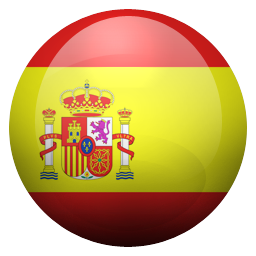Abstract
The artisan salt landscape forms a complex network of components scattered throughout the territory, where festivals are one of the intangible layers that underlie this landscape. Indeed, the festival is part of a spatial-temporal dynamic that contributes to the construction of social, cultural and territorial processes. In this way, the interest of this research lies in identifying the festivals of the salt mines in the Central Zone of Chile in order to study them from a socio-territorial perspective. To this end, the methodology is based on a qualitative and descriptive study, through field work, interviews and direct observation in the Chilean salt mines. The results have revealed that the salt festivals are dynamic elements, inserted in territorial structures, configuring themselves as dynamic components in the salt landscape, which is why it is fundamental to understand them as interconnected, evolutionary, and integrating festive events in a socio-territorial network of the landscape.
References
Amunátegui, P. (2018). ¿Qué es una Fiesta Costumbrista? Origen y Definición. Recuperado de https://identidadyfuturo.cl/2018/04/19/que-es-una-fiesta-costumbrista-origen-y-definicion/ (Consulta: 20/12/2021).
Bustamante, C. (2011). Informe diagnóstico. Elaboración de expediente para la declaratoria de Zona típica, las salinas de Cáhuil.
Cuyate, R., Aparecido da Costa, E., & Pasquotto, M. (2014). Las fiestas como estrategias de implementación de la actividad turística con base local. Reflexiones sobre el Asentamiento 72, Ladário-MS, Brasil. Estudios y Perspectivas en Turismo, 23(2), 305-326.
Fariña Tojo, J. (2020). Identidad y turismo en los paisajes de la sal. Cuadernos de Investigación Urbanística, (129), 17-23. Doi:https://dx.doi.org/10.20868/ciur.2020.129.4400
González, J. (2018). Fiestas Costumbristas y patrimonio cultural en la Región del Maule. Recuperado de https://uautonoma.cl/ceges/fiestas-costumbristas-y-patrimonio-cultural-en-la-region-del-maule/ (Consulta: 20/08/2021).
Herner, M. T. (2016). Patrimonio cultural inmaterial y turismo: fiestas populares como organizadoras del territorio. En XXIII Encuentro Nacional de Profesores de Geografía. Instituto Superior Nuestra Señora del Carmen, Argentina, 1-4 septiembre.
Hueso, K. (2017). Un futuro para el patrimonio y los paisajes de la sal: reflexiones sobre su puesta en valor. De re metallica : revista de la Sociedad Española para la Defensa del Patrimonio Geológico y Minero, (28), 97-108. (Madrid).
Lacoste Adunka, M., & Lacoste, P. (2017). Sal de Cáhuil, cordero de secano y queso de Chanco: aportes para el estudio de patrimonio gastronómico y cultural de Chile. Idesia, 35(2), 17-26. (Arica, Chile).
Meléndez, L. (2001). Revitalización de la cultura a través del turismo: las fiestas tradicionales como recurso del turismo cultural. Revista Turismo em Análise, 12(2), 43-59.
Mercado, C. (2006). Fiestas populares tradicionales de Chile. Instituto Iberonamericano de Patrimonio Natural y Cultural IPANC.
Ministerio de Bienes Nacionales de Chile, (2012). Secano costero. Circuito: Camino real de la costa – Ruta Patrimonial Nº40. Chile: Gobierno de Chile, Ministerio de Bienes Nacionales. Recuperado de http://rutas.bienes.cl/wp-content/uploads/2015/01/40.pdf
Morales, C. (2019). Sal y salinas en Pichilemu. De la sal como materia a la cultura material de la sal. Bajo la Lupa: Subdirección de Investigación, Servicio Nacional del Patrimonio Cultural.
Orozco Salinas, K. (2020a). Paisaje de sal de mar en Chile. Desastre y Resiliencia. Breve reseña de la huella de algunos terremotos-tsunamis en las salinas costeras. Cuadernos de Investigación Urbanística, (129), 74-88. doi:https://dx.doi.org/10.20868/ciur.2020.129.4406
Orozco Salinas, K. (2020b). Patrimonio territorial: Una revisión teórico-conceptual. Aplicaciones y dificultades del caso Español. Urbano, 23(41), 26-39. https://doi.org/10.22320/07183607.2020.23.41.02
Prada Llorente, E. (2004). El paisaje como archivo del territorio. Cuadernos de Investigación Urbanística, (40). Recuperado de http://polired.upm.es/index.php/ciur/article/view/255/250
Pizano, O. (2004). La fiesta, la otra cara del patrimonio: valoración de su impacto económico, cultural y social (Vol. 8). Convenio Andrés Bello.
Quiroz, D. (2010). Los salineros de las costas de Chile central. Historia, sistema productivo y herramientas. Centro de Documentación de Bienes Patrimoniales. Chile.
Román, E. (2014). Las salinas en el territorio: paisaje y patrimonio. En VII Congreso Internacional de Ordenación del Territorio. Madrid, España.
Román, E. & González, M. (2019). Tecnologías de información geográfica para la gestión del Patrimonio Territorial: los paisajes culturales de la sal en Chile. En XI Seminario Internacional de Investigación en Urbanismo, Barcelona – Santiago de Chile, junio 2019”. Barcelona: DUOT.
Romero, C. (2015). Parque Productivo de Intercambio en la Laguna de Boyeruca: Procesos de Ocupación Territorial de las Salinas como Sustento de Sistemas Ambientales. Tesis de Magíster. Pontificia Universidad Católica de Chile.
Sabaté, J. (2020). Las salinas, algunos retos como paisaje cultural. Cuadernos de Investigación Urbanística, (129), 38-46. DOI: https://dx.doi.org/10.20868/ciur.2020.129.4403
Sabaté, J., Frenchman, D., & Schuster, J. M. (2004). Llocs amb esdeveniments: Event Places. Barcelona: Universidad Politécnica de Catalunya. Departament d'Urbanisme i Ordenació del Territori; MIT. City Design and Development of Urban Studies and Planning, DL.
Sarovic, M. (2002). Los trazados de la sal: Lugar y paisaje: transformaciones culturales, salinas de CAHUIL, VI Región. ARQ, (50), 46-49. (Santiago de Chile).
Vera, J. (2003). Sal y sociedad. Las salinas de Boyeruca 1644-2001. Tesis para optar al grado de Magíster en Historia. Santiago: Universidad de Chile, Facultad de Filosofía y Humanidades.

This work is licensed under a Creative Commons Attribution-NonCommercial 4.0 International License.
Copyright (c) 2022 Labor e Engenho


